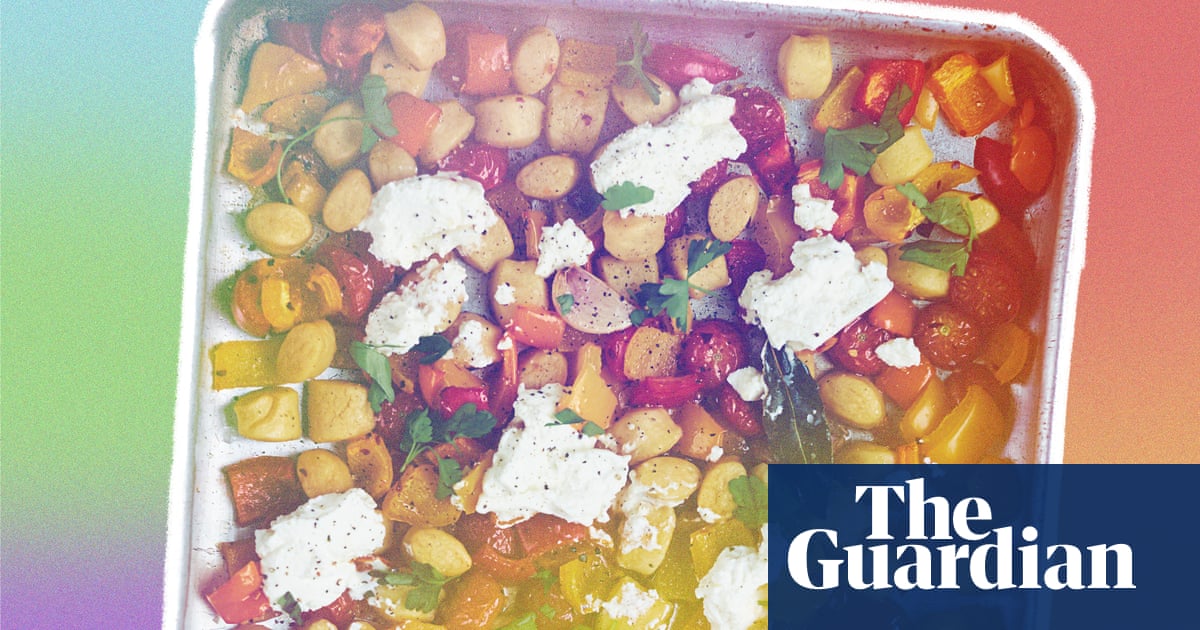Walk into a queer woman’s kitchen and the chances are that the lime-green spine of Rukmini Iyer’s The Green Roasting Tin will be poking out from a surface or a shelf – if it is not already on the counter and splattered with food. You are likely to find it in the homes of allies, too – this is the holy grail of what-to-feed-my-queer–vegetarian-offspring cookbooks.
Not only does The Green Roasting Tin play into stereotypes about gay and bisexual women – all vegetarian recipes, half vegan and supremely practical (the USP of The Roasting Tin series is that all the recipes are oven-cooked in one dish) – but it is also full of indulgence. The tarts, gratins, salads and bakes are dotted with pomegranate seeds or fresh herbs and drizzled with truffle oil or honey. One recipe even has an entire camembert plonked in a tray of potatoes. And that’s what makes it the perfect unofficial lesbian text: its unapologetic goal is pleasure.
“This book is for anyone who wants to eat easy veg-based meals that fit around their busy lives,” reads The Green Roasting Tin’s blurb. The joy of this book is that its simplest offerings, such as the all-in-one roasted tomato and bay orzo bake or the crispy kale and bulgur wheat salad, take half an hour, most of which is baking time, when you can be doing something else. And the booked and busy lesbians have got to eat!
The recipes from this book that I have made the most frequently are the two that feature crispy roasted gnocchi (a revelation!), especially the completely vegan combination of gnocchi, mushrooms, butternut squash and a herby, garlicky, nutty dressing. It was the first recipe I cooked from the book, which is also perhaps why I associate this book so strongly with queerness: I made it with my girlfriend, now wife, when I had just moved into a flatshare, for lunch with my housemates and their girlfriends. Some of us were meeting that day for the first time, but by the end of the afternoon we were all slouched around contentedly, picking off the last bits of gnocchi from the trays.
Big trays of food almost invite you to spend lots of time enjoying them, going back for a second helping or fishing out the last charred mushroom or cube of halloumi. I suppose you could say that this kind of food is a “queering” of the meat-and-two-veg sit-down dinners associated with the traditional heterosexual British family unit. Which is maybe a bit of a stretch – and probably not what Iyer set out to do. But she did put together 75 really easy vegetarian recipes that are all completely delicious. And that, among other things, is exactly what a lot of lesbians want.
